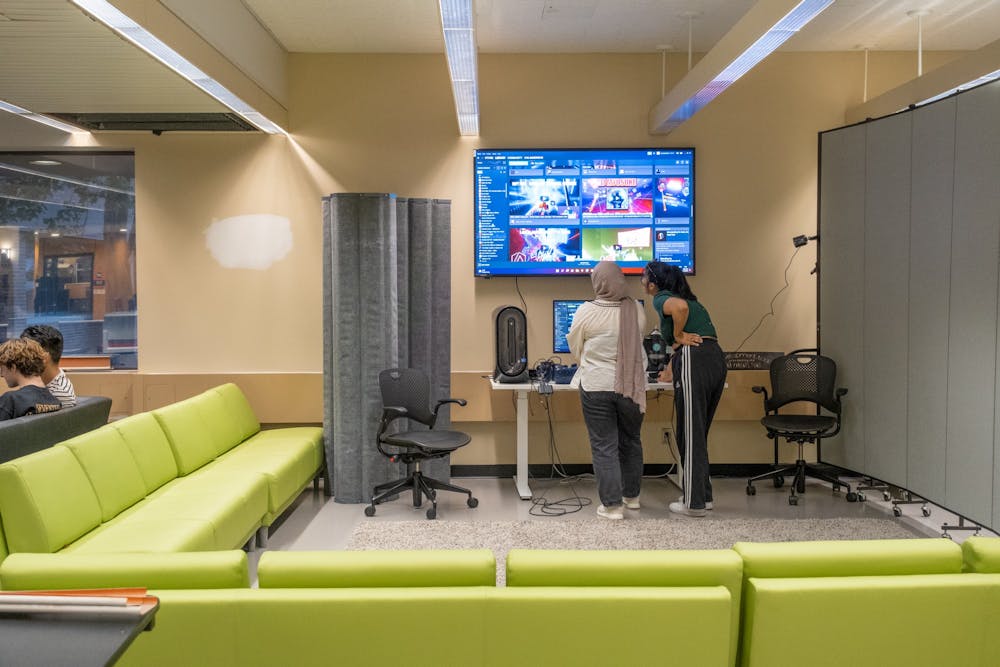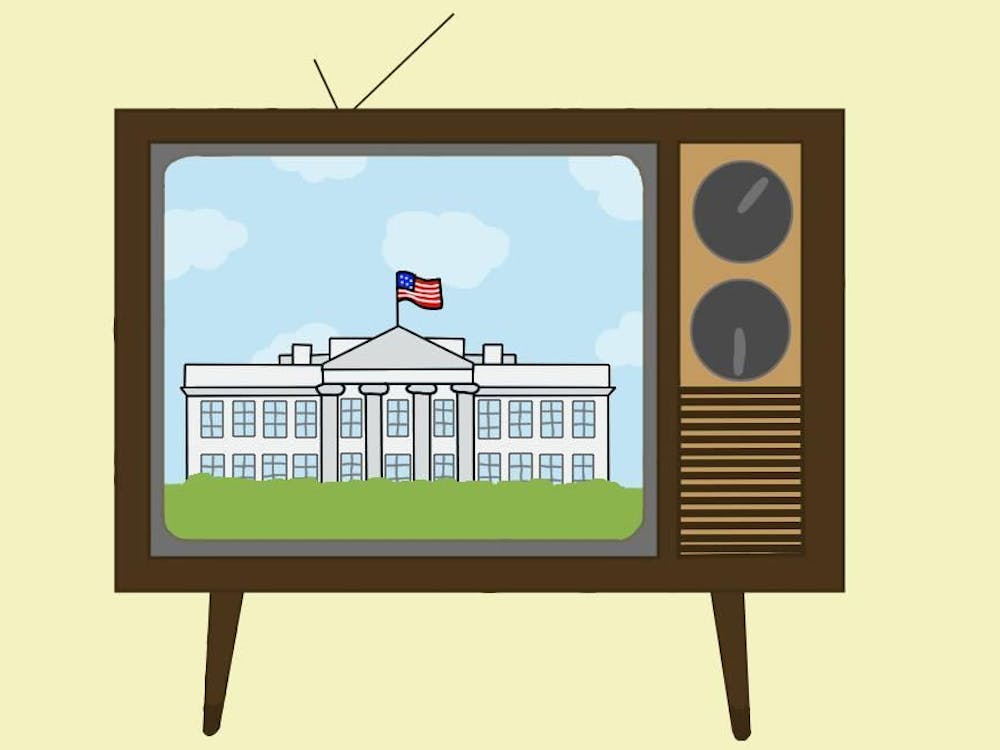Tucked away on the third floor of Clemons Library, the Robertson Media Center has a treasure trove of creative technology resources available for free to University students and staff. Its spaces include audio and video recording studios, a 3D printing studio, virtual reality spaces and computer labs. Forget about hitting the books — there are albums to record, documentaries to film and cartoons to animate, all in the library.
The RMC staff offers one-on-one consultations and specialty workshops alongside basic training for many of their resources. However, no expertise is necessary to try much of the creative technology available, though most spaces require reservation and some have brief virtual orientations.
Josh Thorud, multimedia teaching and learning librarian in the media center, says that often students can jump right in with nothing but a creative vision in hand and learn along the way.
“That's really what it’s here for — experimentation, innovation, just trying to get people to be creative and experiment with creative technologies,” Thorud said. “Just walk in and try something.”
Walking into the RMC, the big decision is which space to explore first. Most eye-catching is the Video Production Studio. Entering into the room, the backdrops are front and center.
“It's just really cool to see people the first time they go in green screen,” Thorud said. “They walk in, and look around, and then they can put themselves anywhere… the options are endless, in that sense. It's just like a magic trick.”
In front of the green screen, there are director’s chairs and other props, professional cameras and a teleprompter. The lighting and audio are already set up for users. This supports the studio’s mission according to Thorud — to be approachable and inclusive while providing access to high end equipment.
Aside from the main Video Studio, students can drop in to the “G-Lab” when it’s not in use to edit with iMovie or Adobe Premiere Pro, or reserve a workspace in the Digital Media Lab to use these softwares on a dual monitor setup. The Digital Media Lab has options for those with niche film interests as well. Anyone can bring in VHS tapes and film slides to explore digitization, and those with experience can work with a Steenback Film Editor.
But the RMC houses more than just filmmaking resources. Audiophiles have their fair share of options as they round the corner into the Audio Studio, one of their most popular spaces. It’s furnished with three sound booths — each with two microphones — various music production tools and computer access to Audacity, Garage Band, Logic Pro, Sound Studio and more.
Students have made everything from music to podcasts in the studio before, with some projects being released publicly. One notable example is “Song Stories”, a podcast created by first-year students in conjunction with the ENWR course “American Roots Music,” released on WTJU in 2020.
A few doors down from these audio booths is the 3D printing studio, another one of the RMC’s main attractions. A “Star Wars” inspired Mandalorian helmet big enough to wear sits above a math project on the rack in the front of the room.
“It's a huge range of projects, everything from memorabilia or costuming all the way up through fine art projects,” Thorud said.
This is possible because of the wide selection of materials and machines available. The 3D Printing Studio currently has seven 3D printers open for reservation, in various makes and models. Though materials would typically be costly, students can 3D print for free after they complete a brief initial training session.
Further down in the RMC’s open space, there lies one more unique offering — two immersive virtual reality spaces. A large rug marks the room-scale movement of each virtual space. According to Pallavi Vemuri, second-year College student and Digital Media Consultant, the most popular use of these VR systems is to play video games. However, the space also houses development software for those looking to get involved with the technical side.
Even when it’s time to leave the RMC, there is a range of technology available for use outside of the physical space, as they offer a range of technology for check out. Everything from high end cameras to projectors to lighting setups are open to students and staff.
Unique projects have been created by students in the past using the RMC’s rented equipment. Students in the Basic Multimedia Reporting Class created “Spring Broken: College on COVID”, for instance, in 2020. CIOs are also big users of rentals for a variety of unique purposes.
“There was one CIO that was trying to do this project with kind of like surround sound almost,” Vemuri said. “It's the sort of sound system where, when you're in different places in the room, you can hear different things. So, if you're in one corner of the room, you hear one thing, if you're in a different corner of a room, we hear another thing, but the placement of all of this equipment is in a way that the sound doesn't clash with each other.”
In the Robertson Media Center, the options are endless for unique creative production. No matter the interest or skill level, the third floor of Clemons Library has the tools to transform creative dreams into reality with its plethora of creative technology at no cost. To learn more about the RMC, check out their website or talk to the front desk.






